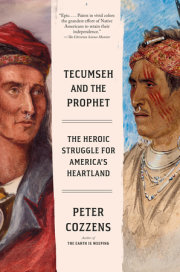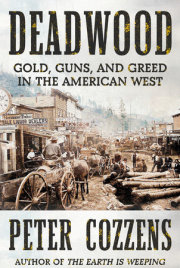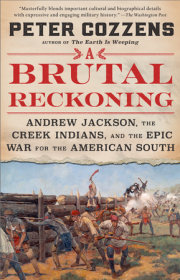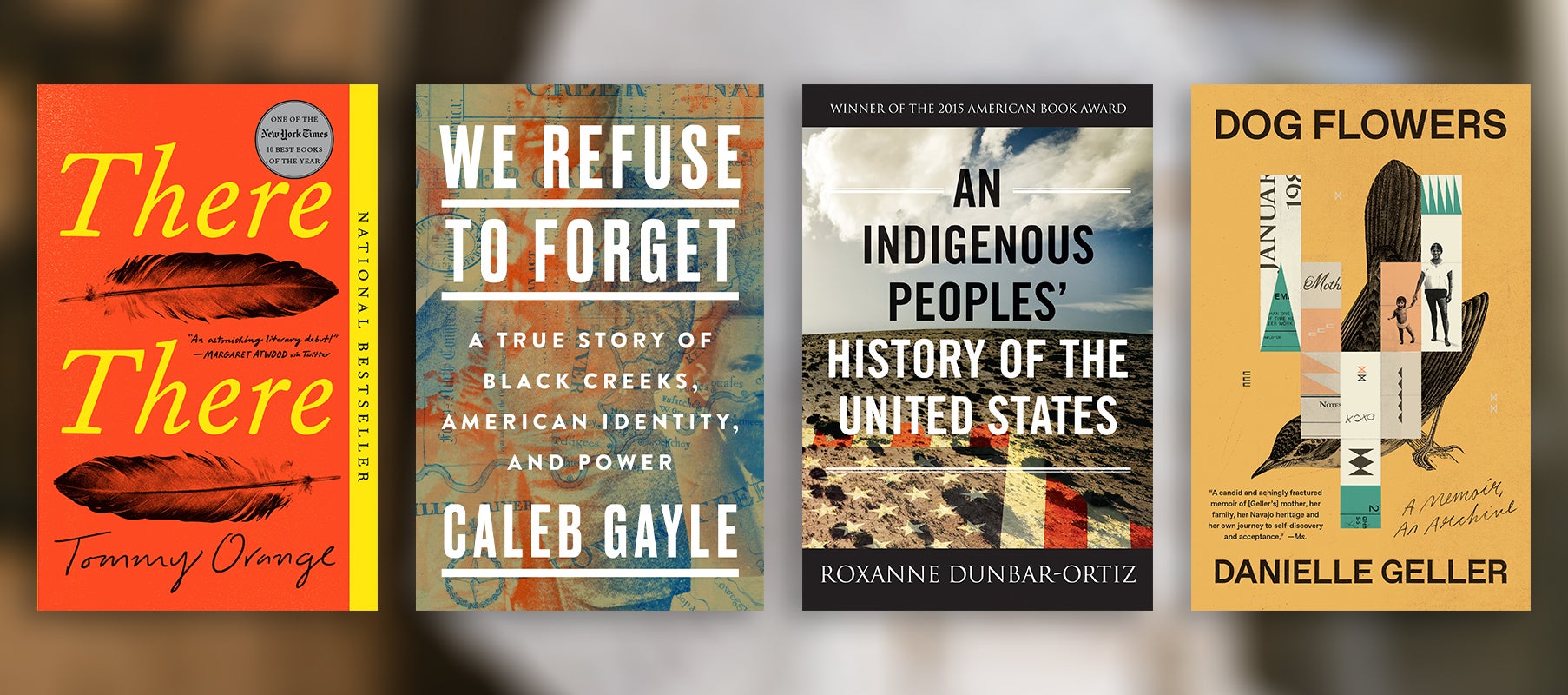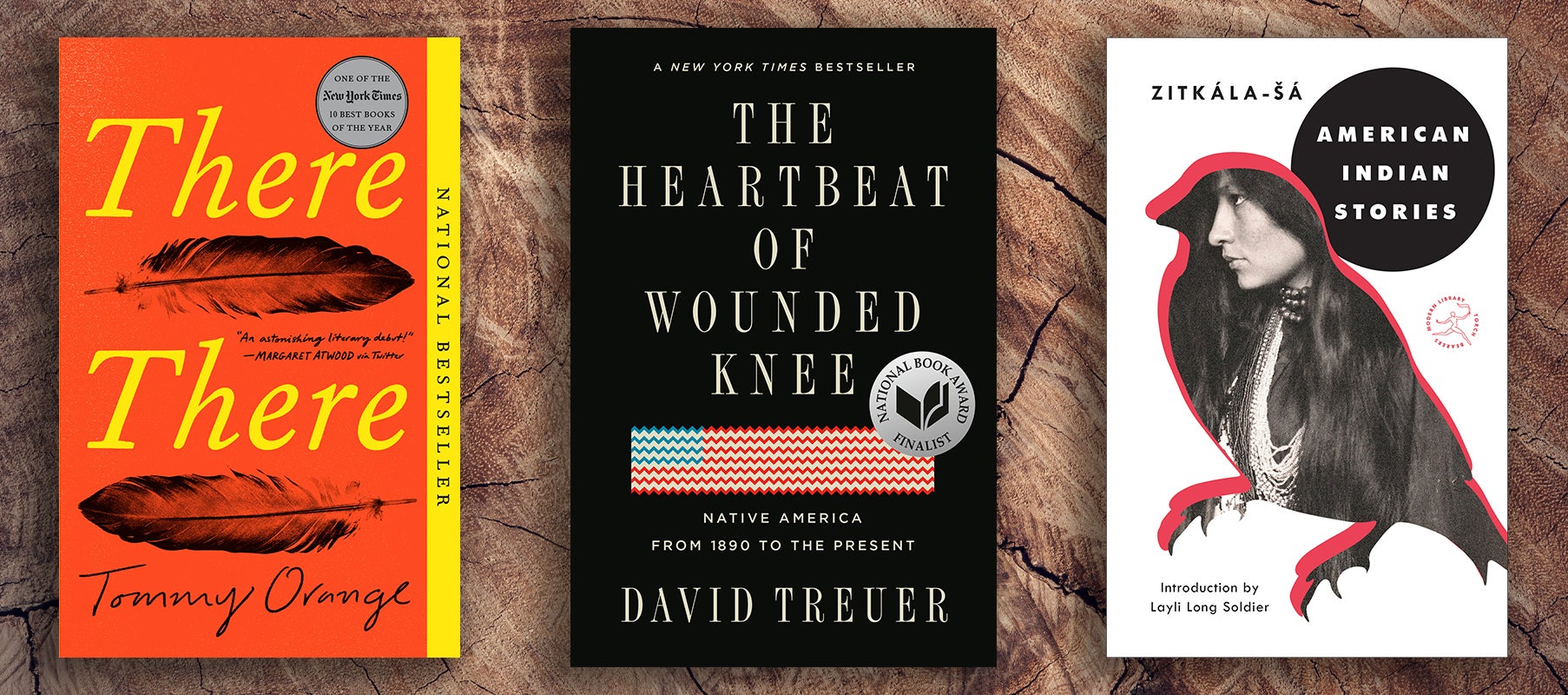Prologue
Dawn of the Long Knives
Daybreak, October 10, 1774. In dense forest, a column of 700 Shawnee and Mingo warriors uncoils into a ragged, mile-long line. Unlike years past, the warriors are not stalking game. Rather, they are preparing to strike 1,200 unsuspecting Virginia militiamen camped at Point Pleasant, a craggy triangle at the confluence of the Ohio and Great Kanawha rivers, approximately 150 miles southwest of modern Wheeling, West Virginia. A carpet of red and russet leaves deadens their footfalls. The warriors wear breechclouts, which are single pieces of cloth wrapped around the hips, buckskin leggings, and moccasins. A few also sport linen hunting shirts purchased from white traders. Most carry smoothbore muskets, tomahawks, scalping knives, and bow and arrows for use if their ammunition runs out. Silver rings dangle from their noses. Huge earrings hang on distended earlobes, framing faces painted in fierce patterns of red and black.
The leader of the war party, the Shawnee chief Cornstalk, would prefer to be elsewhere. Although the provocation had been immense, he had called for restraint. Virginians had flouted a royal proclamation prohibiting settlement on Indian land and instead spilled across the Kanawha River into the Kanawha Valley, part of the greater Kentucky country, all of which was prime Shawnee hunting ground. “I have with great trouble and pains prevailed on the foolish people amongst us to sit still and do no harm till we see whether it is the intention of the white people in general to fall on us,” Cornstalk had told a British official, “and shall continue so to do in the hopes that matters may be settled.” But the royal governor of Virginia, the Earl of Dunmore, who himself coveted Indian land for personal profit, had no expectation of a peaceful denouement. Frontier subjects, he wrote the Crown, despised treaties made with Indians, “whom they consider but little removed from the brute creation.” So too did the Virginia aristocracy. With the spring thaw in 1774, surveyors representing George Washington, Patrick Henry, and other Tidewater elites staked large claims along the Ohio River. Waving away the royal edict against land grabs as a “temporary expedient to quiet the minds of the Indians,” Washington told his personal surveyor not to worry.
With the surveyors came settlers willing to wager their scalps on a scrap of land. For a time, Cornstalk succeeded in controlling his young warriors. They turned back white intruders with stern warnings but seldom harmed them. Then in April 1774 a gang of frontier ruffians butchered a small party of inoffensive Mingo men and women who had crossed the Ohio River to buy rum at a neighborhood grog shop. Other Mingoes who attempted to investigate were shot from their canoes. The dead included the sister and younger brother of the Mingo chief “Captain John” Logan, a longtime friend of the whites who, averred a pioneer who knew Logan well, represented “the best specimen of humanity, either white or red,” that he had ever met.
The massacre shocked the colonies and the Crown. The young Virginia aristocrat Thomas Jefferson excoriated the supposed perpetrators. Hard words and hand-wringing, however, marked the extent of the white response. When the Crown’s colonial justice proved empty, Logan sought revenge in the Indian fashion; he slayed just enough frontiersmen to even the score, taking care to exculpate the Shawnees from his bloody work. To the charred door of a ravaged cabin, Logan posted a succinct confession. “You killed my kin . . . then I thought I must kill too. The Indians is not angry [sic] only me.” Backcountry settlers saw matters otherwise. Misconstruing Chief Cornstalk’s neutrality as hostile intent, Virginia militiamen destroyed a large Shawnee village in the Ohio country. They also laid waste to six Mingo towns.
The die was cast. Shawnee and Mingo war parties retaliated. Frontiersmen reciprocated. Havoc and horror rent the wilderness. As the frontier crumbled, Lord Dunmore mustered the militia to deal the Indians a two-pronged thrashing. No longer able to keep the peace, Chief Cornstalk assumed the mantle of supreme Shawnee war leader. He tried to forge a broad Indian alliance, but British threats and cajolery sidelined other tribes. And so in late September, Cornstalk sallied forth with his Shawnee and Mingo force to defend their lands. Calculating that his only chance lay in defeating Dunmore’s armies before they could unite, Cornstalk turned his attention first to the command of Gen. Andrew Lewis, who was then creeping across the wilds of western Virginia toward Point Pleasant. Although outnumbered, Cornstalk had able Shawnee lieutenants, among them the rising star Puckeshinwau, already honored as both a war and a civil leader, offices the Shawnees rarely combined.
The Indians hated the militiamen but respected their fighting prowess. They called the Virginians the “Long Knives” because of the butcher knives and short swords that they wielded with as much skill as the Indians did the tomahawk. Like Indian warriors, the Virginians were a colorful if undisciplined lot. A few of the officers wore regular uniforms, but most were clad in the same sort of hunting shirts, leather leggings, homemade breeches, broad-brimmed hats or animal-skin caps, and moccasins as their men. Each militiaman carried a flintlock long-rifle or English musket, a bullet pouch, and powder horn carved to individual taste. In addition to knives, many also tucked tomahawks into their belts. Well schooled in Indian warfare and raging with the Kentucky land-fever, the Virginians were impatient for the fray.
This morning, however, they slumbered soundly, unaware of the approaching warriors. The night before, the Indians had slipped across the Ohio River in crude rafts beneath a cobalt sky, debouching on the rocky, timber-strewn Virginia riverbank four miles north of the militia camp. Cornstalk and his lieutenants oversaw the carefully choreographed battle preparations. Their warriors slept a few hours, leaning against trees or propped against forked poles, weapons at the ready. Hunters killed twelve deer and ritually sliced the venison under the watchful eyes of medicine men (spiritual and natural healers), who examined the roasted strips for spiritual purity before handing each warrior one piece. After eating, the men buried their blankets and shirts beneath leaves. Deploying in units of twenty, they each crammed four balls into their muskets to inflict maximum punishment at short range. They would tomahawk any survivors. Cornstalk selected the best marksmen to descend to the riverbank to pick off any Virginians desperate enough to plunge into the broad Ohio after the Indians sprang their trap.
And then his plan unraveled. At dawn, October 10, 1774, two early-rising Virginians wandered into the forest to hunt deer. Instead they ran into the Indians. One militiaman crumpled, riddled with musket balls, but the other stumbled back into camp to sound the alarm. Instantly the drums beat to arms. The backwoodsmen rolled from their blankets, examined their flints and priming, and awaited orders.
Feigning composure, General Lewis lit his pipe. He blew a few puffs and then ordered two colonels to lead double columns of 150 men forward to discover the source of the commotion. Both officers fell in the first Indian volley. Concealed behind the trunks of maple and pine and in the tangled underbrush of the river bottom, the warriors dropped dozens of militiamen, screaming epithets at the “sons of bitches” and “white dogs” as they fired. Lewis pushed out reinforcements, and the combatants grappled at close quarters in the smoke-choked timber. “Hide where I would,” a Virginian recalled, “the muzzle of some rifle was gaping in my face and the wild, distorted countenance of a savage was rushing towards me with uplifted tomahawk. The contest resembled more a circus of gladiators than a battle.”
After six hours of close combat, the two sides backed apart and traded fire from behind trees and fallen timber. Puckeshinwau and his fellow war leaders moved along the Indian line, exhorting their warriors to “lie close,” “shoot well,” and “fight and be strong.” Near sunset, General Lewis occupied a high ridge that Cornstalk had neglected to secure. Stung by bullets from above their left flank and low on ammunition, the Indians melted back into the forest and recrossed the Ohio. The Virginians contented themselves with scalping fallen warriors and collecting souvenirs.
It had been a bloody twelve hours. The Indians killed seventy-five Virginians and wounded another 140. Perhaps forty warriors died. Hoping to disguise their losses, the Indians rolled several of their dead into the river. The Virginians nevertheless collected thirty-two scalps. These they affixed to a post at Point Pleasant.
The battle claimed just one prominent Indian, the Shawnee war leader Puckeshinwau. His thirteen-year-old son Cheeseekau, not yet a warrior, had accompanied him into action. After Puckeshinwau fell mortally wounded, Cheeseekau helped ease him back over the Ohio in a driftwood raft. Before dying, Puckeshinwau reputedly admonished his young son to preserve his family’s honor, never reconcile with the Long Knives, and “in the future lead forth to battle his younger brothers” against them. Cheeseekau swore to obey. Puckeshinwau’s warriors buried their chief deep in the forest.
Cheeseekau had accepted a heavy burden. He had three siblings, and his now-widowed mother was pregnant with triplets. Cheeseekau’s favorite sibling, upon whom he would lavish most of his attention and who would best fulfill his father’s last wish, was his six-year-old brother Tecumseh, the “Shooting Star.”
Copyright © 2020 by Peter Cozzens. All rights reserved. No part of this excerpt may be reproduced or reprinted without permission in writing from the publisher.




